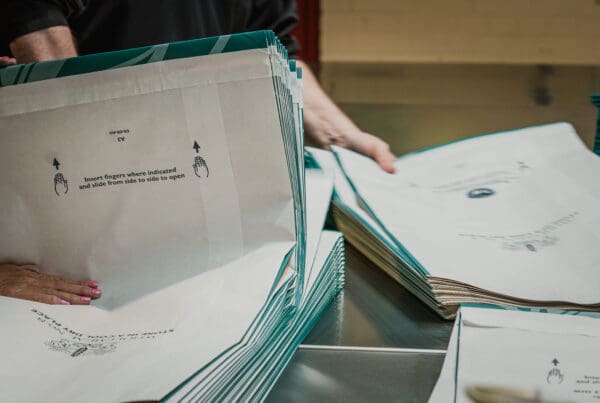History of Paper Sacks
As industries move towards reducing their carbon footprint, CB paper sacks offer an excellent alternative to plastic. These sacks are 100% reusable, recyclable, and biodegradable. They pose minimal threat to wildlife and can be disposed of responsibly.
The paper sack is a simple invention; carefully constructed for the purpose of transporting items from one place to another. But where did the paper sack get its roots? How did it rise to popularity as a grocery bag, lunch bag, and retail shopping bag? In this article we will discuss the history of paper sacks.
What did people use before it’s invention? Seemingly they mostly used reusable and durable vessels like baskets, canvas bags, burlap bags, or woven bags. The first paper sacks were made by hand, which meant they weren’t very efficient or convenient to produce at a larger scale. It wasn’t until the mid-1800’s that mass manufacturing of paper sacks became a real possibility.
The history of paper sack manufacturing dates to the mid-18th century when the first paper sack-making machine was invented by schoolteacher Francis Wolle in the United States in 1852. This machine was used to produce flat-bottomed sacks that were intended for holding groceries, dry goods, and other small items. and his brother invented the first machine to mass-produce flat, envelope style paper sacks. They patented the machine and then founded the Union Paper Bag Company. The invention of a machine that could mass-produce sacks was a huge stepping stone in the widespread use of paper sacks. However, these sacks were very simplistic, flat, and could not hold a wide variety of items.
However, it was not until the late 19th century that paper sacks gained widespread popularity as a packaging material. In 1871, the first machine for producing square-bottomed paper sacks was invented by Margaret E. Knight, a woman inventor from the United States. She began experimenting with machine designs that could feed, cut, and fold the paper automatically into a flat-bottom paper sack. The invention of this machine allowed for the mass production of paper sacks and helped to reduce the cost of production.
Charles Stilwell in 1883, patented a machine that made square-bottom paper sacks with pleated sides, making them easier to fold and store. This style of sack came to be known as the S.O.S. bag, or “Self-Opening Sack”. The sacks would stand upright on their own when opened making them easy to load.
Walter Deubener in 1912, a grocer in Saint Paul, Minnesota, noticed that his shoppers were having a hard time carrying their groceries home with existing bag options. He experimented by punching holes in a standard paper sack and threading cord through the holes to create handles. He decided to patent his invention and named it the “Deubener Shopping Bag”. By 1915, they were selling over a million sacks per year.
By the early 20th century, paper sacks had become a popular and ubiquitous packaging material in the United States and Europe, and paper sack manufacturing had become a major industry. The use of paper sacks was encouraged during World War II, as paper was seen as a more readily available and sustainable resource than other materials such as plastics.
Paper sacks made life easier for a lot of people. Parents could now send their kids to school with ‘brown bag’ lunches. People could transport their groceries and purchased items home more easily. Retailers could give their customers a better shopping experience by providing functional paper sacks to carry their goods home. All these advances in the mass production of paper shopping sacks eventually led to retail businesses using bags for marketing and branding purposes.
In the 1960s, the popularity of paper sacks began to decline as plastic bags became more widely available and affordable. However, with the growing awareness of environmental sustainability in recent years, paper sacks have once again gained popularity as an eco-friendlier alternative to plastic sacks.
Today, the paper sack manufacturing industry has grown significantly, with companies around the world producing a wide range of paper sacks for various industries, including retail, food, agriculture, and healthcare, among others. The industry has also seen significant advancements in technology, with the development of machines that can produce paper sacks in various shapes and sizes, using sustainable materials and production methods.



